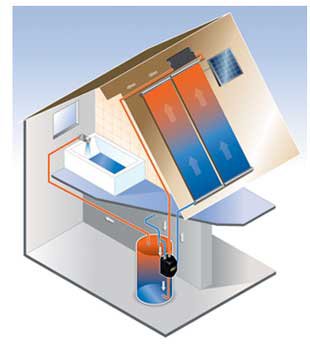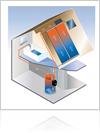Florida lives up to its nickname “the Sunshine State,” and many homeowners throughout North Central Florida take advantage of this by harnessing solar energy to light their homes, keep their pools warm, and heat water for their sinks and tubs. One of the best ways to harness the free, abundant energy of the sun is to install solar water heaters in Clermont or Hernando . These systems supplement your current gas or electric water heater with solar power. Read on to learn more about how they work.
 Water Heater Basics
Water Heater Basics
Most residential water heaters feature a reserve tank that holds dozens of gallons of hot water, ready for use at a moment’s notice, and solar hot water heaters are no exception. Roof-mounted collectors (similar to solar panels) absorb thermal energy from sunlight, and use this to heat the water before delivering it to the tank. This reduces energy consumption, since you are not burning gas or using electricity to heat the water—only free solar energy.
Collector Designs
There are three basic designs for the energy collectors that form part of solar water heater systems. Passive collectors feature an insulated box containing large copper tubes which hold the water. They are equipped with tempering valves to keep water at a comfortable temperature when it comes out of the tap, since the water will continue to heat up in the tank. Flat plate collectors consist of an assembly of copper tubes and tempered glass. Indirect polymer collectors, which are the most energy-efficient type, feature a series of self-insulated tubes to provide maximum heat.
Circulation Systems
Many solar water heaters use direct circulation, where the water itself passes through the collectors before being stored in the tank. In warm climates such as that of South Florida, this system is ideal. The best for North Central Florida are indirect systems, also called closed-loop systems, which feature a special heat transfer fluid that warms the water in the tank. The systems can either be passive, where natural convection pumps the water from the collectors to the tank, or forced-circulation, which use pumps, valves, and controllers.

